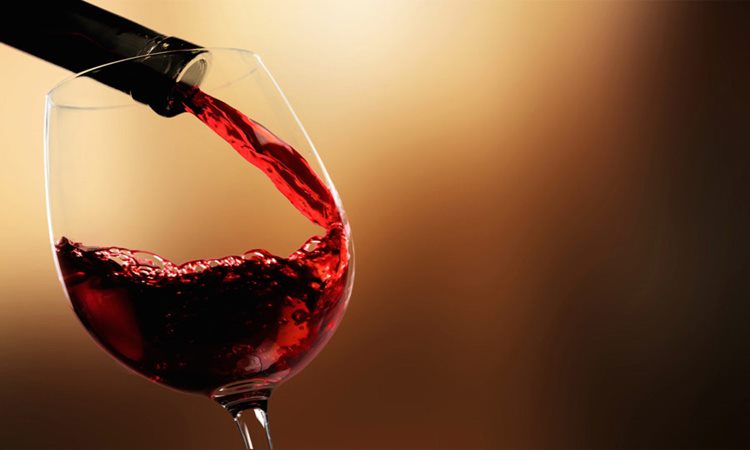Here Are 6 Fascinating Details About Wine
WINE FACTS – Numerous fascinating wine-related tidbits often go unnoticed by the majority, either because people don’t take the time to explore them or because they remain undiscovered.
The world has been conquered by wine. In 2021, global wine consumption reached a staggering 23.6 billion liters, which is equivalent to roughly 9,440 Olympic-size swimming pools filled with wine.
Here are some intriguing facts about reds, whites, and rosés, ranging from their rich and esteemed history to the reasons for caution when considering wine salvaged from shipwrecks.

1.People Have Been Making Wine for Thousands of Years
Between 2007 and 2010, a team of archaeologists excavated a cave near Areni, Armenia, where they discovered the remnants of an ancient winemaking facility. This site yielded a grape-crushing press, fermentation and storage jars, ceramic cups, and the preserved remnants of grape vines, skins, and seeds, protected by a layer of sheep dung. By analyzing the presence of malvidin, the compound responsible for grapes’ reddish-purple color, researchers estimated that this winemaking operation was active around 4000 BCE, during the Copper Age, making it the oldest known winery. Even earlier biomolecular evidence of viniculture dates back to about 6000 BCE. Among the oldest types of wine still produced today is Commandaria, a sweet red-white dessert blend originating from Cyprus dating back to 2000 BCE.
2. Almost All Wines Are Grown From a Single Species of Grape
Vitis vinifera, believed to be native to Western Asia, is the parent vine of most wines produced today. Over the course of centuries, winemakers have selectively bred and hybridized these vines to create subspecies with distinct colors, flavors, and adaptability to various climates. There are approximately 8,000 grape cultivars in existence today, including well-known varieties such as Pinot noir, chardonnay, sauvignon blanc, and Merlot. While V. vinifera vines have been traditionally cultivated in regions with hot, dry summers and mild winters like Italy, Spain, and France, major wine producers now include the United States, Chile, Australia, South Africa, and other countries.
3. In the 19th Century, an Insect Nearly Wiped Out France’s Wine Industry
An aphid known as phylloxera, native to North America, was unintentionally introduced to France in the 1860s. While native American grape species had developed resistance to this pest, French winemakers had maintained the purity of their vines to ensure the high quality of their wines, making them susceptible to foreign invaders. Consequently, phylloxera wreaked havoc on French vineyards in the late 19th century, necessitating the grafting of phylloxera-resistant American vines onto French ones to save the industry.

4. A Wine’s Terroir Can Be Legally Protected
The French vintners in the 19th century initially resisted grafting American rootstocks onto their precious vines due to concerns that it would compromise the special flavor profile, or terroir, of their wines. Terroir encompasses the entire environment in which grapes are cultivated, including soil and water characteristics, temperature, altitude, and the influence of these factors on the flavor and aroma of the wine. In France, a wine’s terroir can be legally protected through the AOC system (Appellation d’Origine Contrôlée), which classifies wines according to their region of production and quality. This system, for instance, stipulates that Champagne can only come from the Champagne region to safeguard its unique terroir.
5. California Wines Beat French Rivals in a Blind Taste Test
In a momentous event known as “The Judgment of Paris,” held on May 24, 1976, California wines unexpectedly outperformed their esteemed French counterparts in a blind taste test, astonishing French wine experts. An English wine shop owner organized this event to boost business, with the assumption that French wines would easily win. However, in a surprising turn of events, a cabernet sauvignon and a chardonnay from Napa Valley emerged as the victors, challenging the notion that only France could produce the world’s finest wines. Today, bottles of these winning wines are on display in the Smithsonian collection.
6. Wine Is Often Found in Shipwrecks
Wine has been traded internationally for centuries, and ships transporting it have occasionally encountered mishaps. In some instances, fully intact bottles of wine have been discovered among the wreckage of sunken ships. Although experts advise against consuming the contents, some adventurous individuals remain undeterred. In 2009, a hurricane disturbed the seafloor around Bermuda, revealing still-sealed bottles in the wreckage of a Civil War-era ship; a panel of tasters described it as “awful.” Champagne recovered from a 170-year-old shipwreck in the frigid Baltic Sea was noted to have hints of cheese and “wet hair.” Among the recent discoveries waiting to be sampled are unopened bottles of wine from the wreck of the HMS Gloucester, which sank while carrying the future King James II of England, and bottles that went down with a British steamship after a German torpedo attack during World War I.

